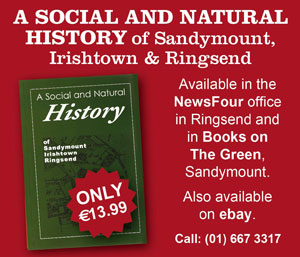
Driven by Rosemary Smith with Ann Ingle, published by Harper Collins, price £14.99 is available from booksonthegreen.ie.
By Eoin Meegan
Tall, graceful and elegant, described as a Dusty Springfield look-alike, Irish racing driver Rosemary Smith has just released a new autobiography, which at the time of going to press has been nominated for Book of the Year.
Driven, written by Ann Ingle, distils Rosemary’s personality and experiences into an insightful look at the racing driver’s career and life. Rosemary had been looking for the right person to tell her story to for some time and when long-time friend Paul Howard (Ross O’Carroll Kelly’s author) suggested Ann, the matter was settled.
Rosemary has fond memories of Sandymount, where she lived for a time as a child, and recalls riding her pony Penny on the strand early on Saturday mornings. She says she was very shy growing up, even when she started rally driving, and feels this made people think she was diffident and stand-offish. But the years have matured her and she is comfortable having a conversation on any topic now.
After graduating from the Grafton Academy of Fashion she opened a shop in South Ann Street. It was here, ironically, that her racing career began. Delphine Bigger, who owned a coffee shop next door asked Rosemary one day to accompany her in a rally in Kilkenny. It turned out Rosemary couldn’t read maps, but she certainly could drive and that’s how it all began.
Rosemary did her first circuit of Ireland in 1959, an event she won on numerous occasions, coming third overall in 1968 behind Roger Clark and Adrian Boyd.
She competed in the RAC rally of Britain with Delphine in 1961, and again with Susan Reeves in 1965 and Valerie Domleo in 1966. She did most of her driving in her famous Hillman Imp, which she is happy to record is now fully restored and in pristine condition.
Smith was taken on by the Rootes company (later Chrysler) and did the Monte Carlo eight times, winning the Coupe de Dames five times. In a sport that is highly competitive and sometimes dismissive of women drivers, she was always able to hold her own.
Rosemary had a strained relationship with her mother which lasted into adulthood. She felt her mother stifled her and remembers constant rows in the family when she was growing up. One of the things she regrets is that she didn’t have closure with her mother before she died. She was, however, devoted to her father and was very close to him.
It was he who taught her to drive, as well as passing on invaluable driving tips, such as if the car is stuck in snow to put the mats under the wheels to give them grip. This paid dividends in 1965 during the Tulip Rally in Holland. Not having car mats, Smith took the new suede jacket she had bought in Spain and without a moment’s hesitation used that, going on to finish overall winner, a feat which assured her a place in racing’s hall of fame.
Another piece of advice that probably saved her life in the Geneva Rally of 1968 was: when the brakes fail, slow the car by dropping down through the gears, and a third nugget of wisdom was that if a car won’t go forward it will go in reverse, which Rosemary duly remembered in the London to Sydney Marathon, also in ‘68, where she famously drove backwards over the Khyber Pass.
In 1968 Smith was dropped by Chrysler/Rootes but she continued to have a very successful freelance career, indeed it gave her more freedom to pick and choose. She completed the Kenyan Safari Rally, considered one of the most challenging in the world, with Pauline Gullick in 1974, having some very scary moments involving the Masai tribe along the way. And she even presented her own one-off TV show on RTE.
Rosemary, however, didn’t have as much success off the track as on it, and suffered two failed relationships. She got married in 1970, which she regretted almost immediately as it was clear from the beginning they were a mismatch; perhaps the pressures of being on the road as a successful racing driving were too much for them both. It ended in a Haitian divorce.
And later a relationship with a conservatory salesman was equally disappointing. She did well financially and at various times in her life owned a farm in Clonee, a house in Eglinton Road, Donnybrook, and one in Sandyford which she claimed was haunted.
However, in later years Rosemary struck on hard times, which she ascribes to the aforementioned injudicious relationships. She ended up in a lot of debt and having to resort for a time to living on welfare.
The book goes into this difficult period with great sensitivity. At this period she suffered serious depression, at times feeling suicidal, but thankfully she has overcome that and is now living happily, and running her own driving school teaching young people to drive. Her job gives her great satisfaction and she is full of enthusiasm for life, now a lot less hectic than it used to be.
Driven is the kind of book that will appeal to the sports enthusiast, but equally to the person who wouldn’t know the engine of a car from the boot, as it is a real human interest story.
Ann has managed to capture Rosemary’s voice very well. When NewsFour talked to her recently she said that her primary objective was to capture the authentic sound of Rosemary’s voice, her nuances of speech and individual style. “I wanted to get her particular way of saying things just right,” she said. I think she nailed it.
Reading the book felt as if I was sitting down with Rosemary and she was telling me the story herself. It would make an excellent Christmas stocking filler.



